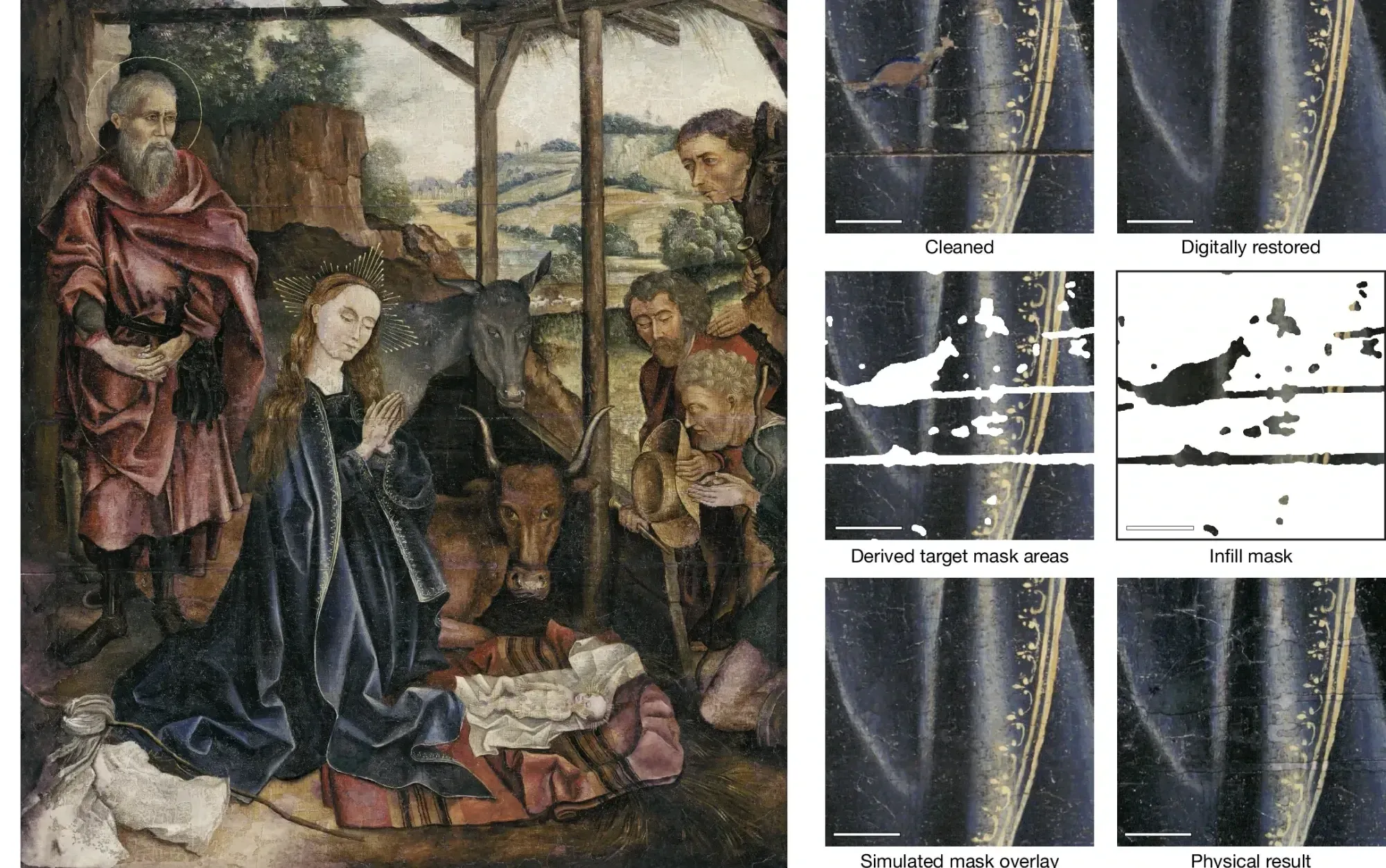Physical restoration of damaged paintings is often reserved for prized artworks because it is a mostly manual, expensive, and time-consuming process. This is especially true of the final retouching or inpainting stage, as it typically involves painting the damaged areas of an artwork by hand, ensuring they match the original palette and composition as closely as possible. It is not unusual for physical restoration processes to take months or even years. Because of this, many, if not most, artworks in museum collections remain in storage, hidden away from the general public.
A recent Nature paper proposes a new reversible method for the physically applied digital restoration of damaged paintings. To restore a painting to the Master of the Prado Adoration, researchers created a mask using a polymeric film printed with two layers of pigments. The film is laid on top of the original canvas, and can be safely peeled off or removed using conservators' solvents without leaving any residue. The mask itself was developed using deep learning techniques, including local convolution to reconstruct and extend low-complexity patterns from the local context. Additional methods, such as direct transfer from the features of another work by the same painter, were leveraged to solve larger areas of damage.
The paper endorses physically applied digital restoration techniques by highlighting its benefits: the full process took 3.5 hours, and estimates place the total manual work needed to perform a similar restoration at 200 hours, minimum. Moreover, the digital mask parameters can be adjusted before printing the polymer film. This resolves conflicts associated with deciding which areas to manually inpaint and mitigates the risk of overworking a restoration.
Given the method's flexibility and affordability, it could be applied to artworks that would not usually be considered as candidates for restoration. Using techniques like the one outlined in the paper, museums could potentially expand the range of pieces they can display to the general public. Still, there is also acknowledgement that there may be unresolved ethical challenges related to the physical alteration of a canvas by fully covering it with a film, for instance, whether overlaying a full mask over a painting detracts from the viewing experience, or whether copying features from other artworks by direct transfer, even if they are by the same artist, is appropriate.





Comments